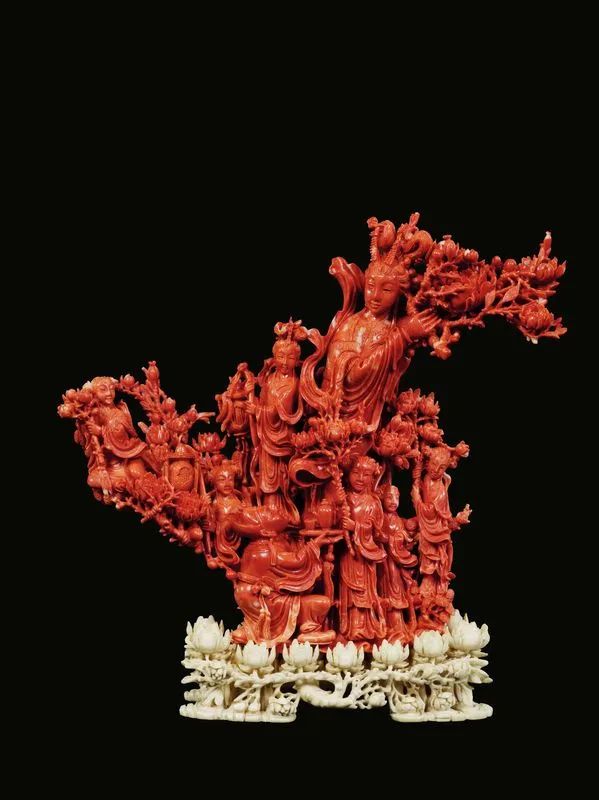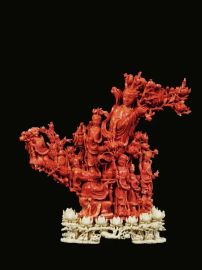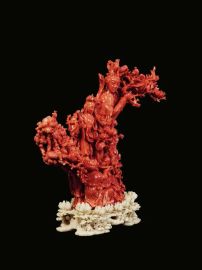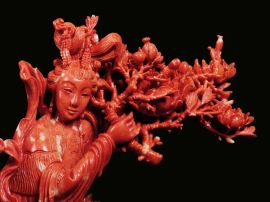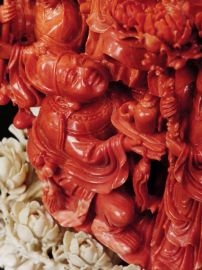CARVING, CHINA, LATE QING DYNASTY, XIX CENTURY
Red coral, 24,5 cm high, 1965 g. weight
Standing on a carved ivory base, 5,5 cm high
Extraordinary red coral branch, finely carved with the theme of WangMuZhuShou (王母祝寿), that means the “Celestial Anniversary of the Queen Mother of the West”.
The main figure Wangmu is dressed with an elegant robe and a majestic hairstyle; she is holding a big bunch of peonies in bloom. The secondary figures are sumptuously dressed and hold flowers and lanterns to accompany the Queen Mother. In foreground, in the centre of the scene, a male deity is kneeling in worship to celebrate the event; on the belt of his dress there are peaches, symbol of longevity.
The theme represented is a homage to the Taoist religion and to the legend “Journey to the West” (西游记) in which one of the most important female figures is the Queen Mother of the West, universal symbol of longevity and prosperity and guardian of marriage.
The first historical data on the existence of this celestial deity can be traced back to oracle bone inscriptions of the Shang dynasty (1766-1122 B.C.), that fully describe this figure both in her physical appearance and in her status.
The Queen Mother of the West is usually represented in her palace on the Mount Kunlun, where she hosts and summons all the Taoist and Buddhist deities. She is venerated by all worshippers for her pure and merciful soul.
On the third day of the third month of every Lunar year, the Queen Mother's birth anniversary is celebrated with the famous “party of the peaches”, during which she summons all deities in order to give them immortality. As a consequence, this goddess is intensely worshipped and she is mentioned in the legends of the Eastern culture.
This legendary and fascinating figure is also represented in a white jade carving at the Victoria & Albert Museum in London, Great Britain. Inv. n.VA07056.
王母祝寿珊瑚摆件,中国,晚清年间, 十九世纪

